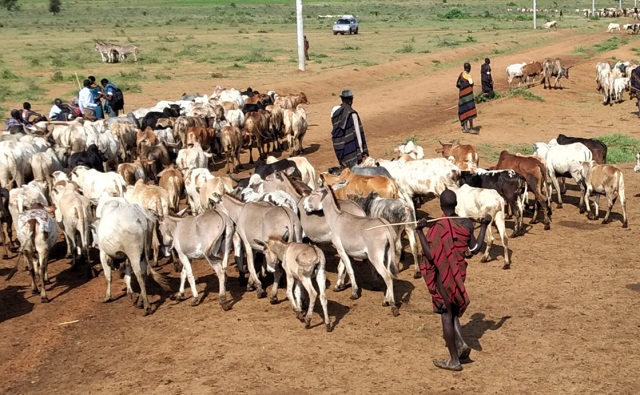
Warriors re-arm in vacuum created by relocation of UPDF soldiers
Kampala, Uganda | RONALD MUSOKE | It is early afternoon in Lokitela-ekuam village in Rupa sub-county in Moroto District on July 01 and about 200 villagers are seated under a big umbrella tree, discussing increasing cattle theft and violence in the area. Everyone appears tense, nervous, and agitated.
Every speaker talks tough. They want a return to the peace they have enjoyed for the last 15 years since the government did a major disarmament programme in their community.
Prisca Nakiru is one of only three women at the meeting. As LC III Chairperson of Rupa sub-county, she is unusual in this male-dominated warrior society where might is often equated to right. Standing at about six feet tall and armed with a voice that commands authority, she lays out her plan before the many young men and a few elders.
Nakiru knows about rumours that the government is pondering a second disarmament programme. And she knows most Karimojong dread it. Many have no fond memories of the last disamarment. They say the government soldiers were ruthless.
“If we stop stealing cows, the disarmament will not come back,” she tells the meeting, “If you have a gun, better hand it over peacefully before the security people come to your homes.The animals we raid do not bring any benefits to the community; they only bring curses.”
Stella Atyang, the Woman MP for Moroto District, is the other woman at the meeting. She is softer spoken than Nakiru. But her message is as clear.
“The person who brought back cattle raiding to our region is the real enemy of Karamoja,” she tells the men, “togetherness is what will bring development to the community.”
Following 15years of peace, the Karamoja region in the semi-arid northeastern horn of Uganda is slowly slipping back into its violent and notorious past. The Karimojong are pastoral people but many are now struggling to protect their prized asset: the cattle.
Karamoja, a conglomeration of nine districts, is about 27,511 sq km in size which actually makes it slightly bigger than Rwanda (26,338 sq km). It has a population of about 1.2 million people.
But the sub-region holds about 30% of the country’s livestock wealth including; 20% of the nation’s cattle, 16% of its goats, nearly half of all sheep, over 90% of donkeys and all camels, according to the most recent available statistics from the Uganda Bureau of Statistics which were released in 2009.The livestock; especially cattle is the mainstay of the people.
On a recent visit to the region, The Independent heard tales of desperation from victims of cattle loss. The leaders of the national army (the UPDF) stationed there say they have the situation under control but local leaders and civil society say the cattle thefts are spiraling out of control.
Raiding cattle is an ancient traditional practice in the region, used in the past to acquire cattle for prestige and marrying many women. But the practice has turned into a commercial venture involving businessmen from outside Karamoja.
“The thieves steal these animals and move them at night and sell them for as low as Shs 200,000. The cows are taken to Kampala and Mbale but the biggest number are taken to South Sudan,” says Peter Abrahams Loki, the MP for Kotido Municipality.
Loki says Karamoja has been suffering since the government pulled UPDF personnel from the region and took them to Somalia. He says a vacuum was created that the cattle entrepreneurs exploited and people began re-armament.
“From the use of bows and arrows to steal one or two cows, gunshots began reverberating in the region and the thieves are taking away thousands of cattle,” Loki told The Independent.
MP Atyang told The Independent that what is going on is not petty cattle theft, although some people prefer to call it that.
“These are raids because a massive number of animals are involved,” she said.
“A village that loses 700 cows in one swoop loses about Shs 1.5 billion; people are losing a lot of money in these ongoing cattle raids,” says Simon Peter Longoli, the executive director of the Karamoja Development Forum, an indigenous non-profit that is building capacity to protect pastoralist rights in the region.
“These raids are subjecting people who are already vulnerable to more decades of poverty,” he told The Independent in an interview.
“From the stories we are gathering, the violence is getting back to the pre-disarmament days,” he said. He was referring to a ten-year disarmament programme that ran between 2001 and 2010.
The disarmament programme saw the UPDF rid Karamoja of over 40,000 illegal arms, bringing an end to armed cattle rustling. But Karamoja’s vast landscape and sparse population coupled with porous international borders with Kenya and South Sudan have seen Karimojong warriors get rearmed.
 The Independent Uganda: You get the Truth we Pay the Price
The Independent Uganda: You get the Truth we Pay the Price




Hello to every body, it’s my first pay a quick visit of this weblog; this
weblog consists of amazing and really good information for readers.